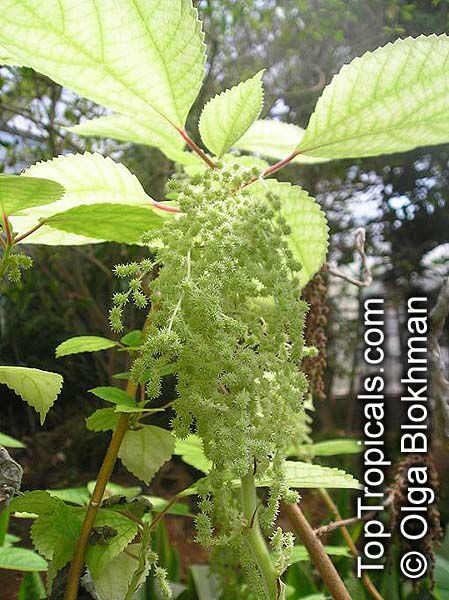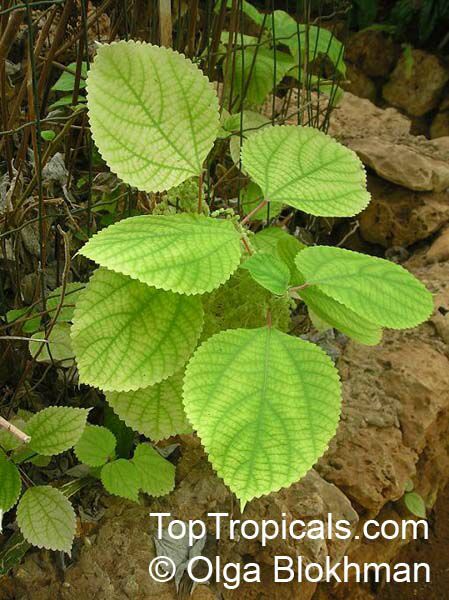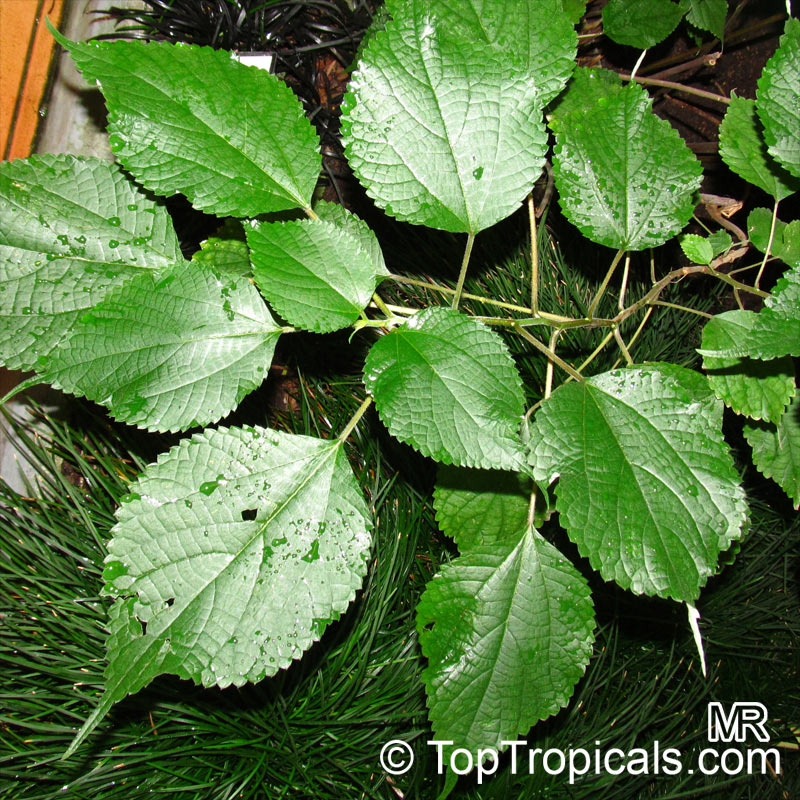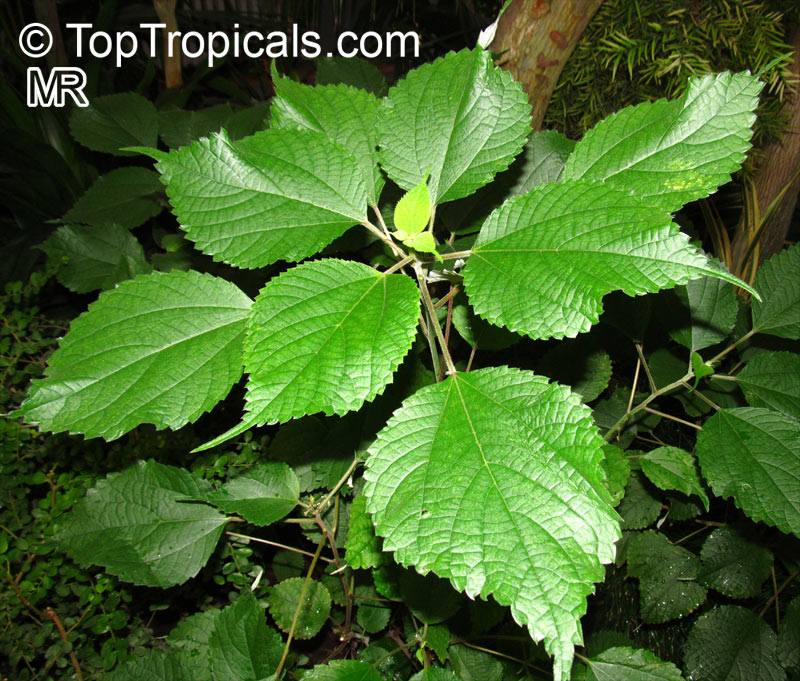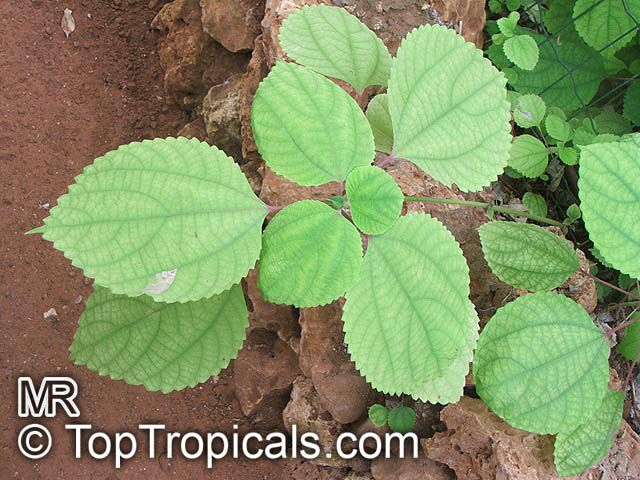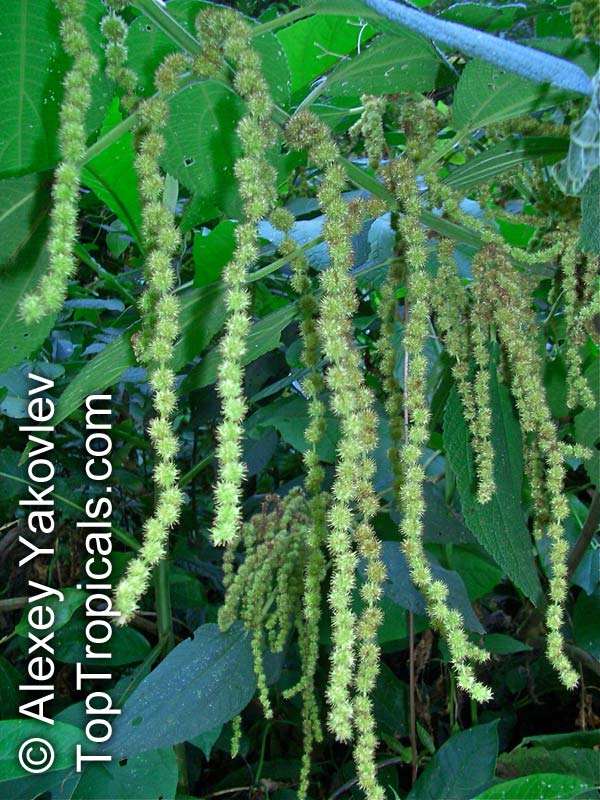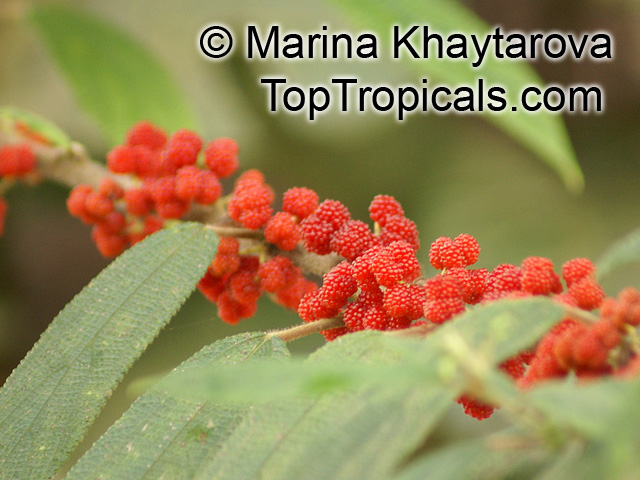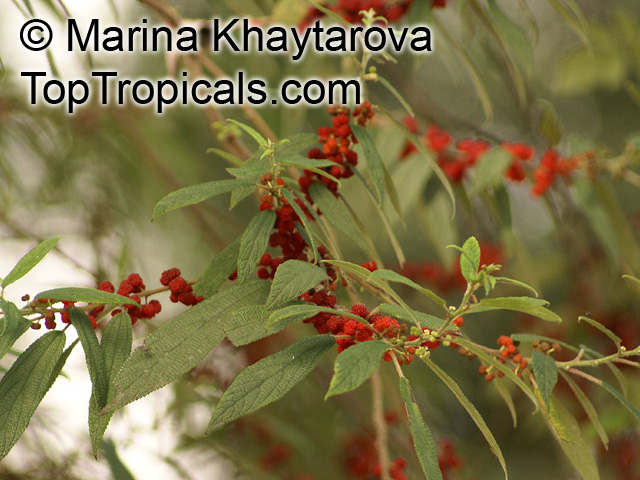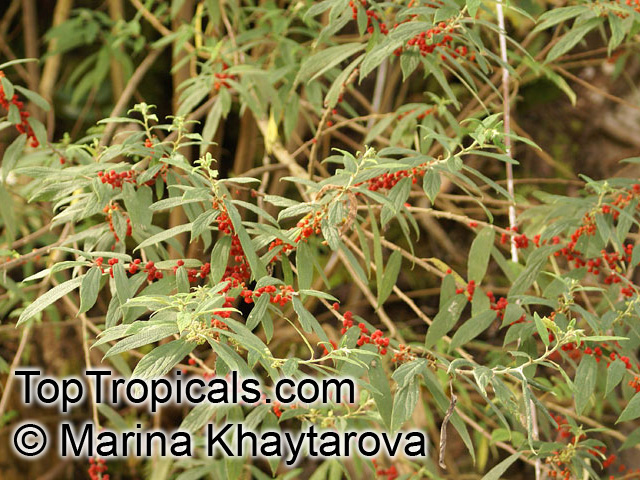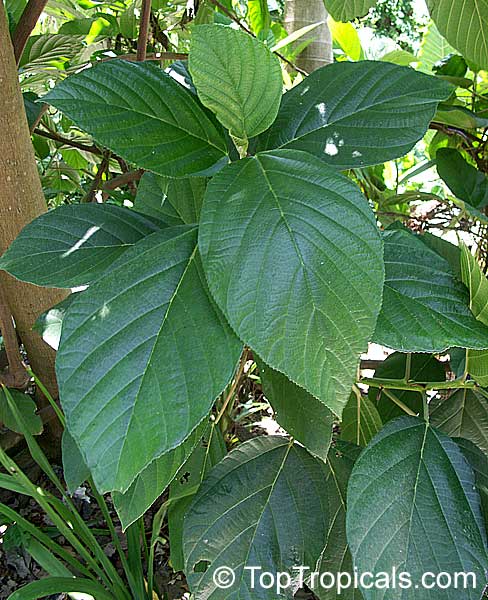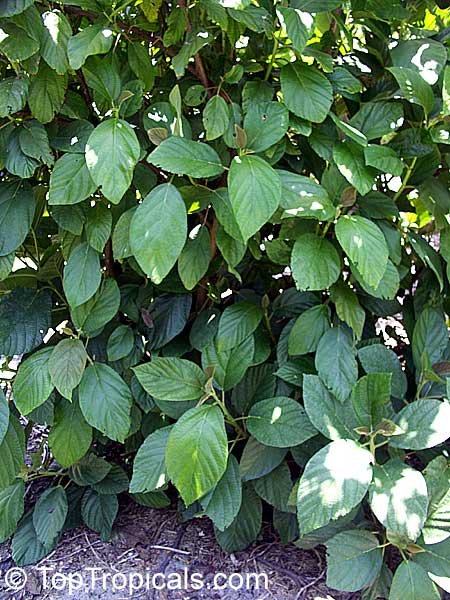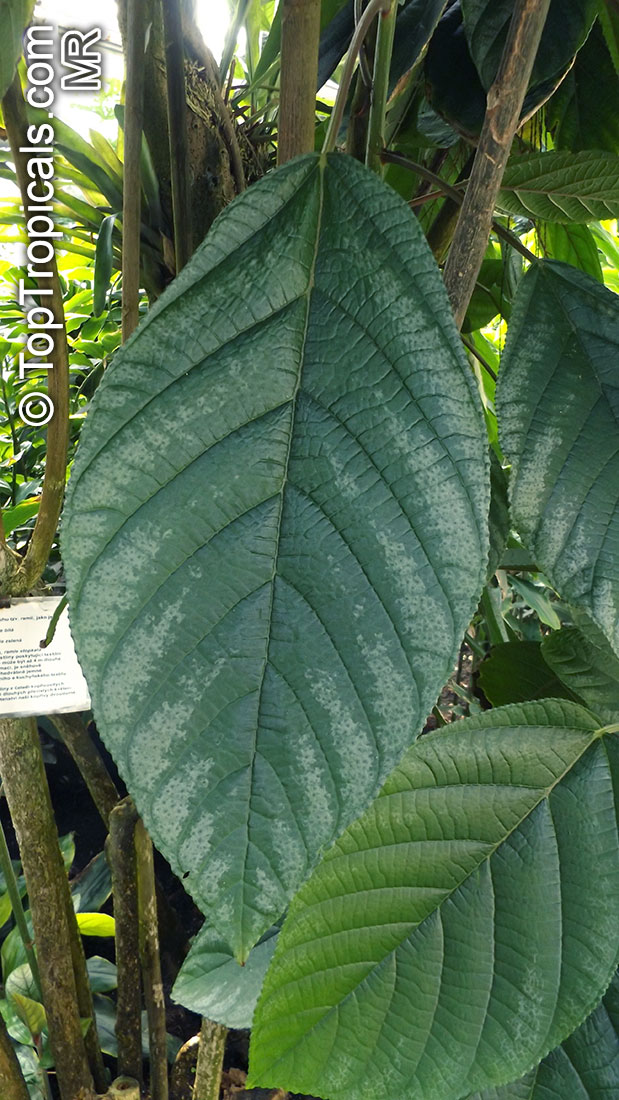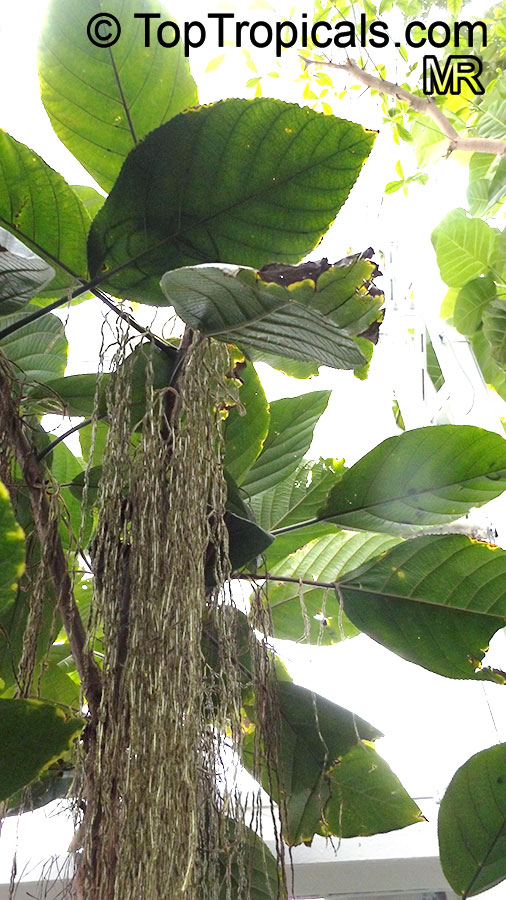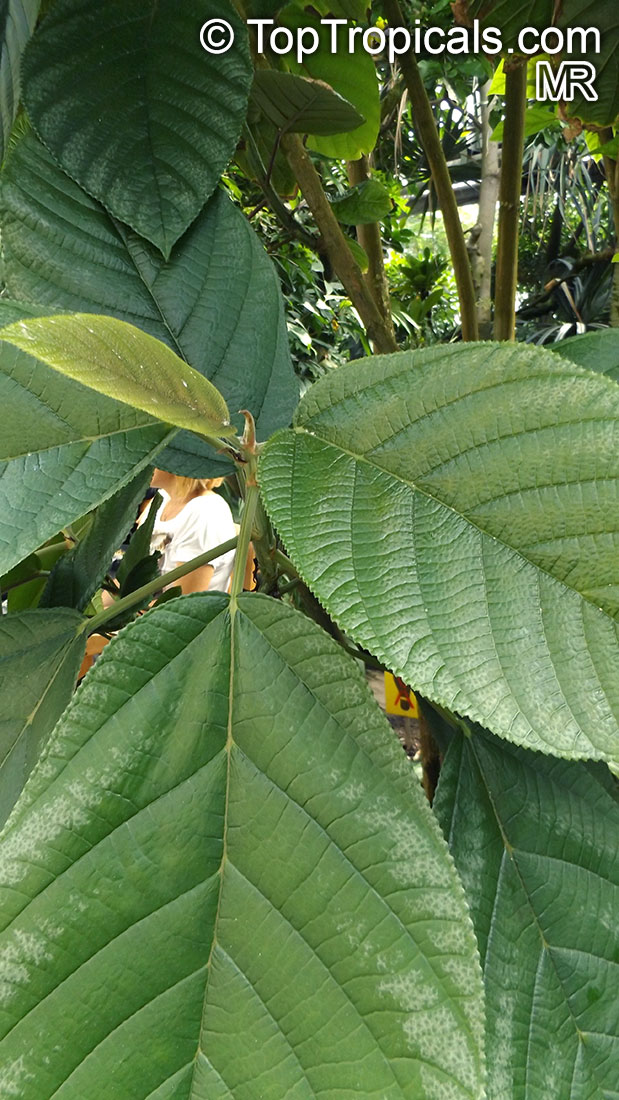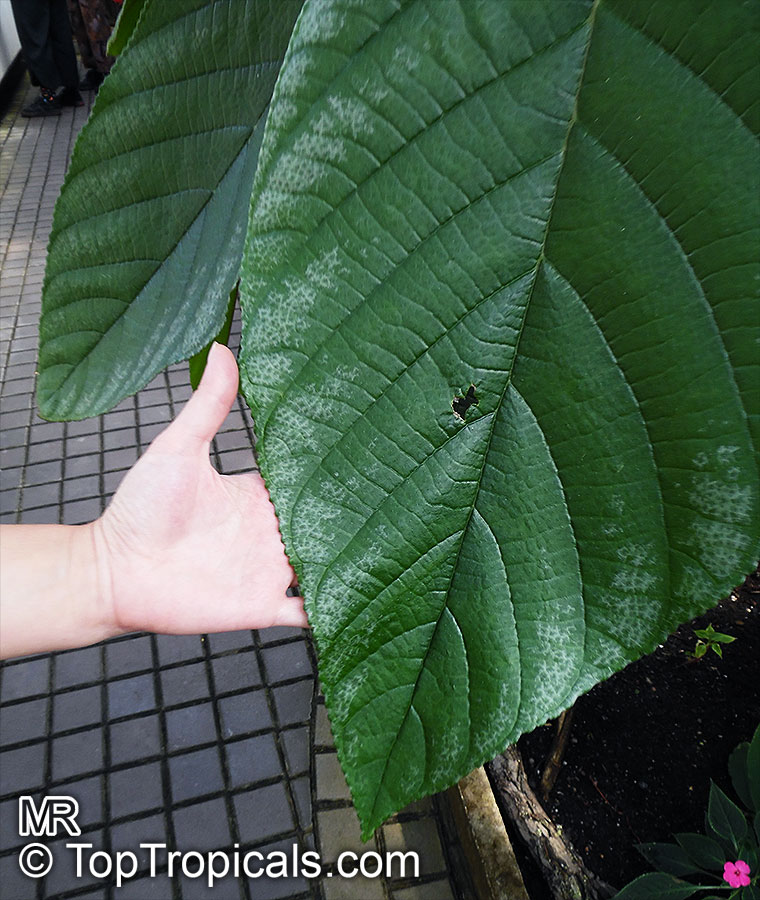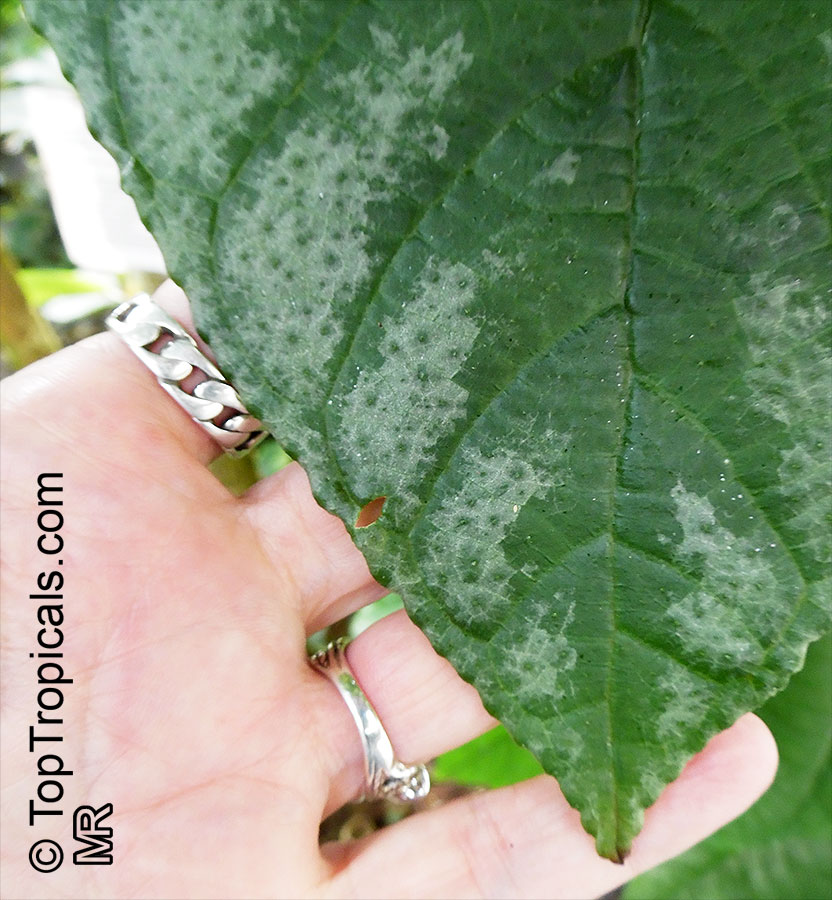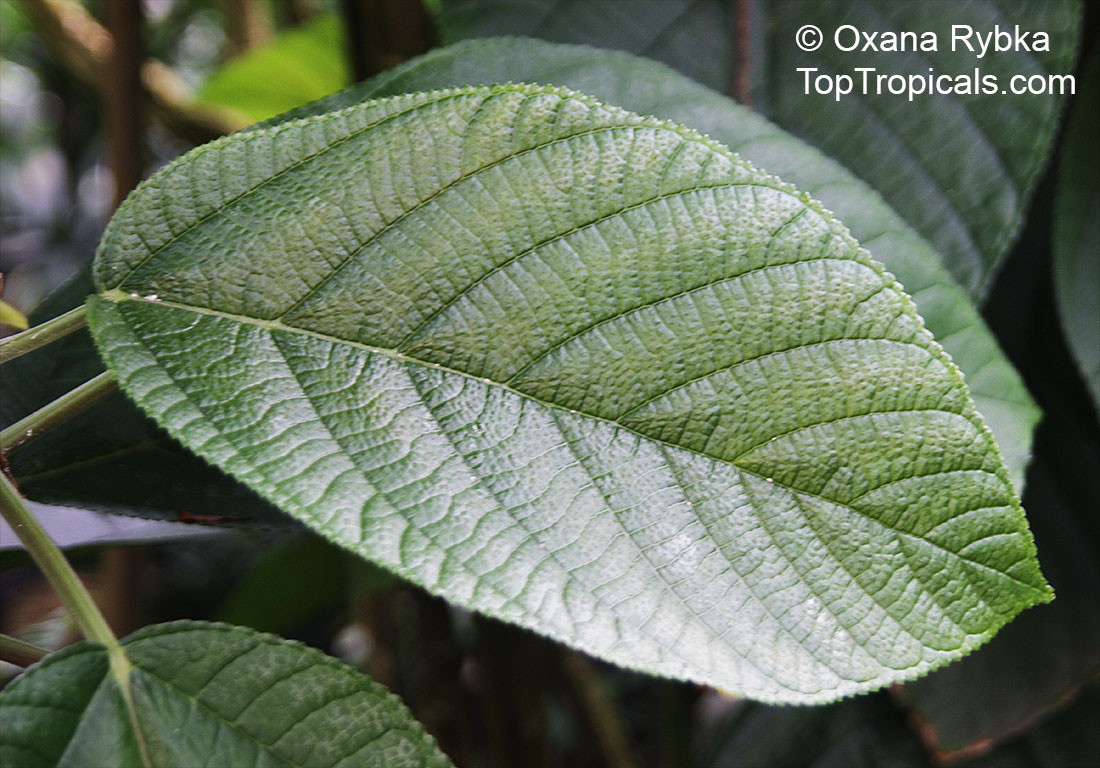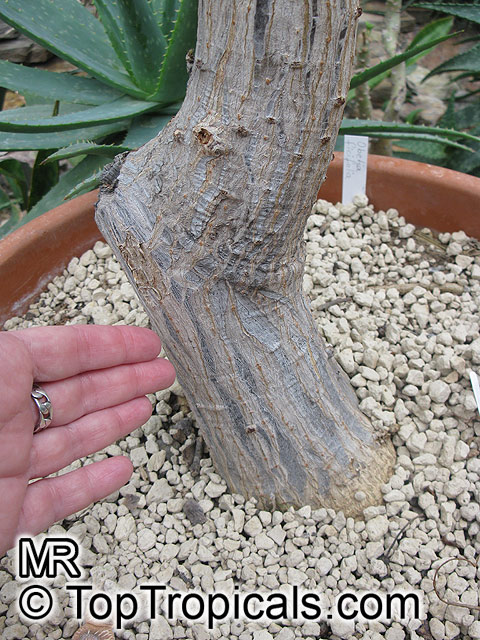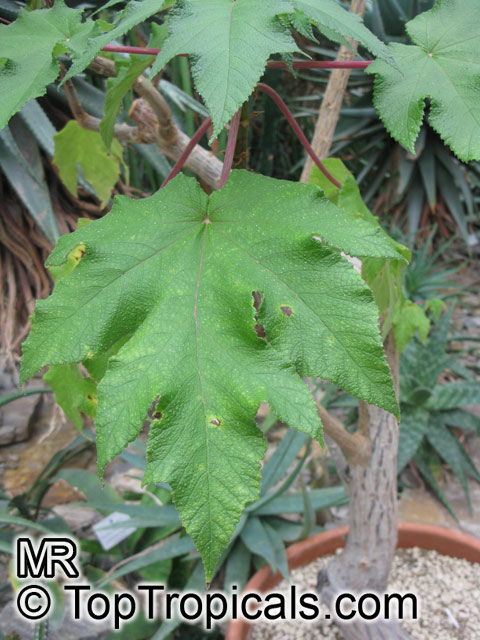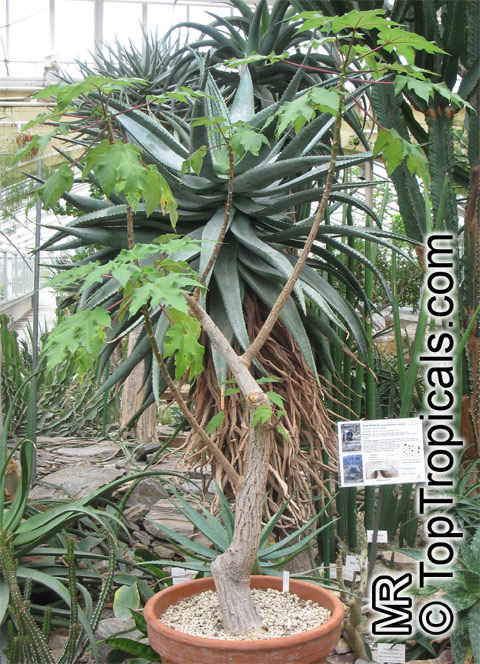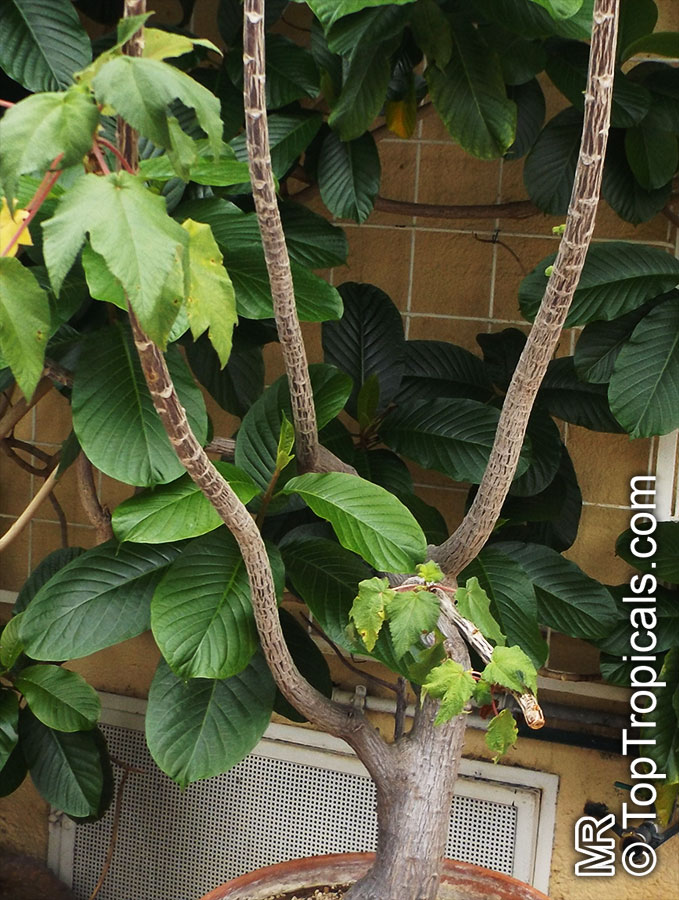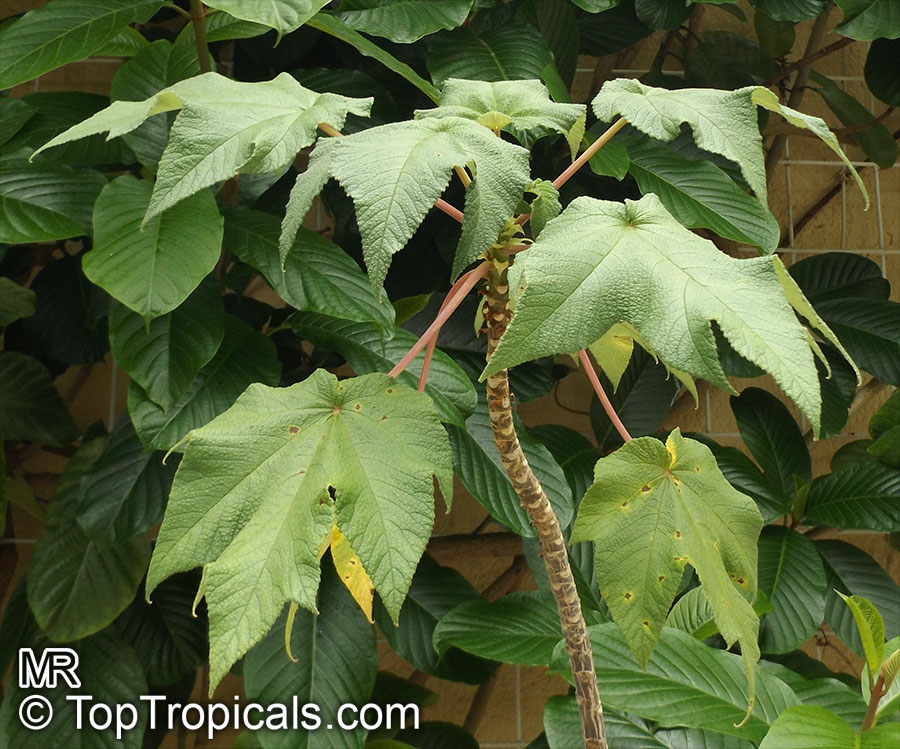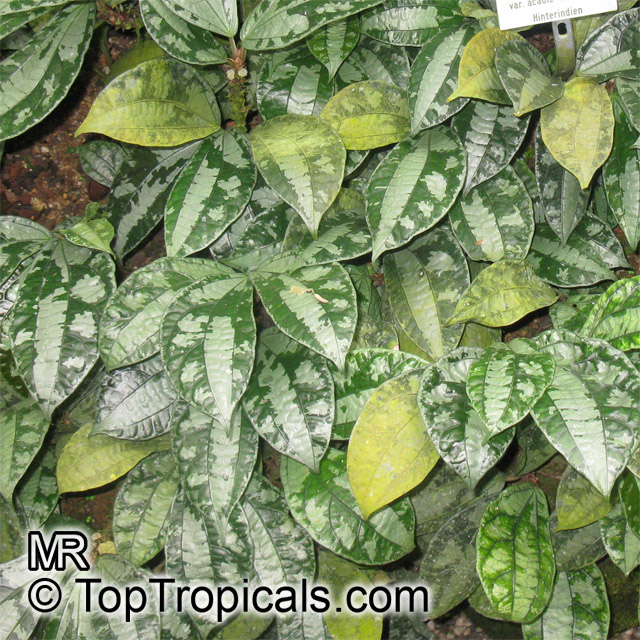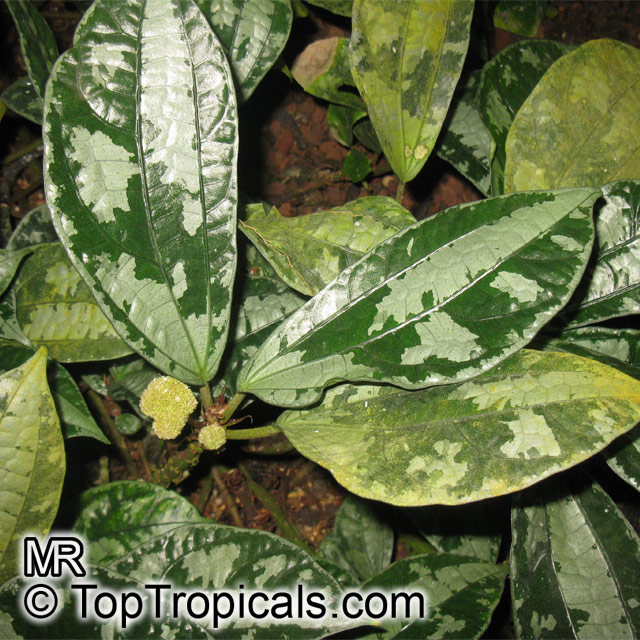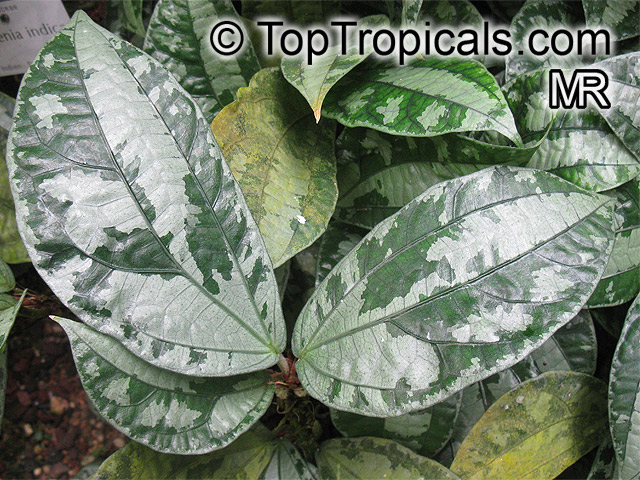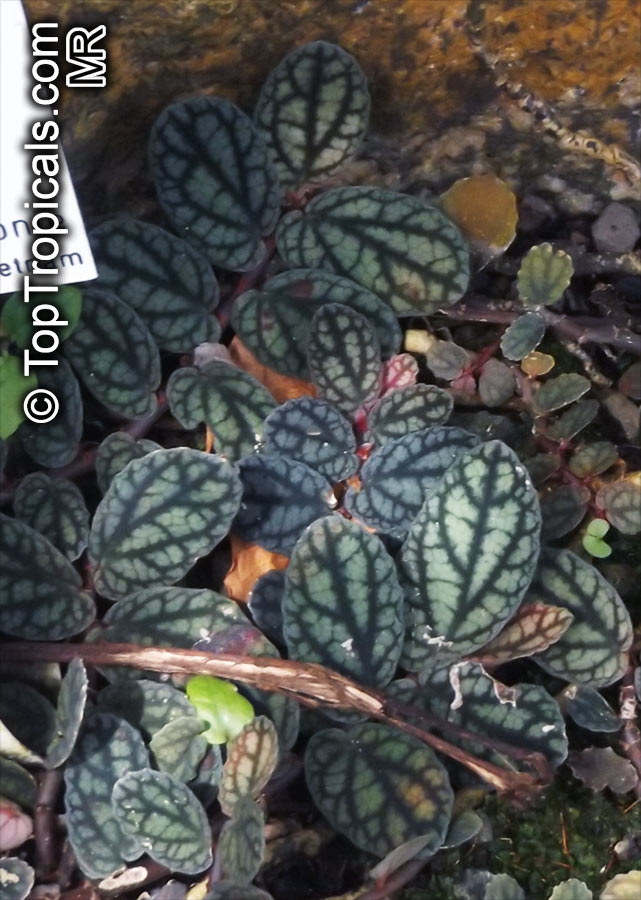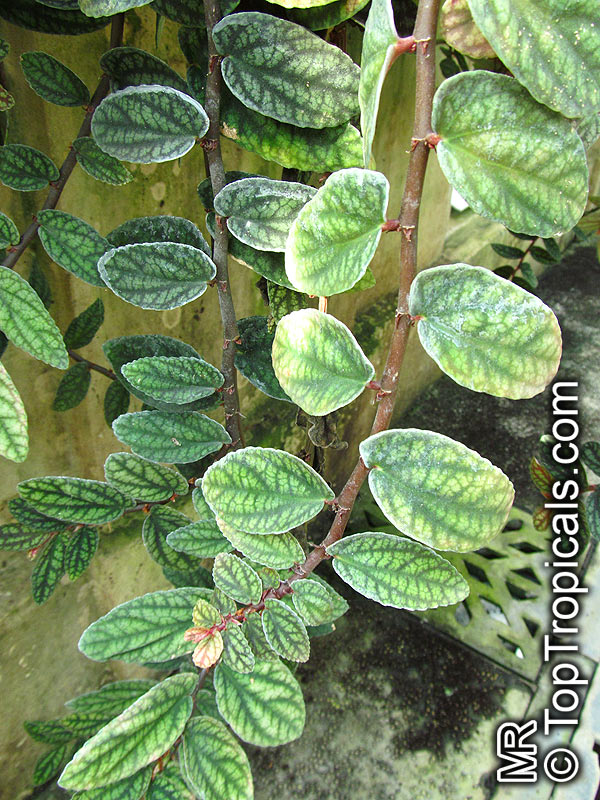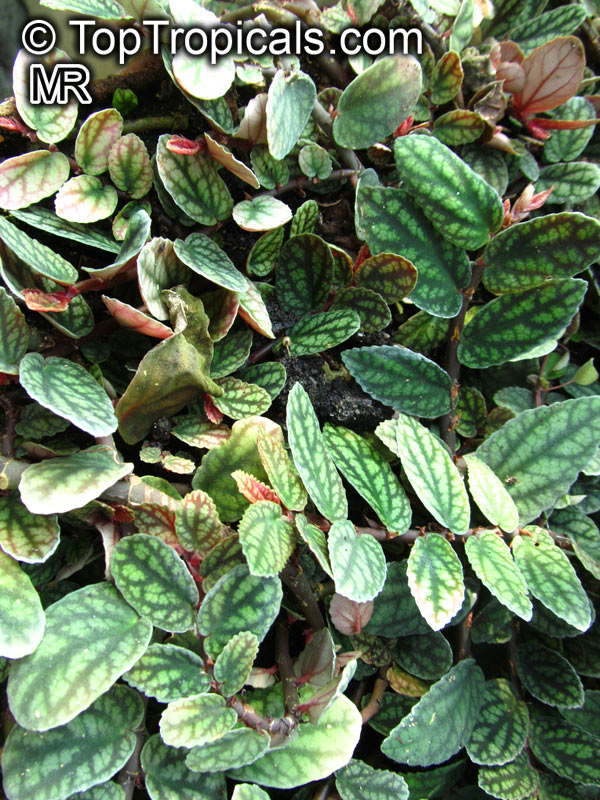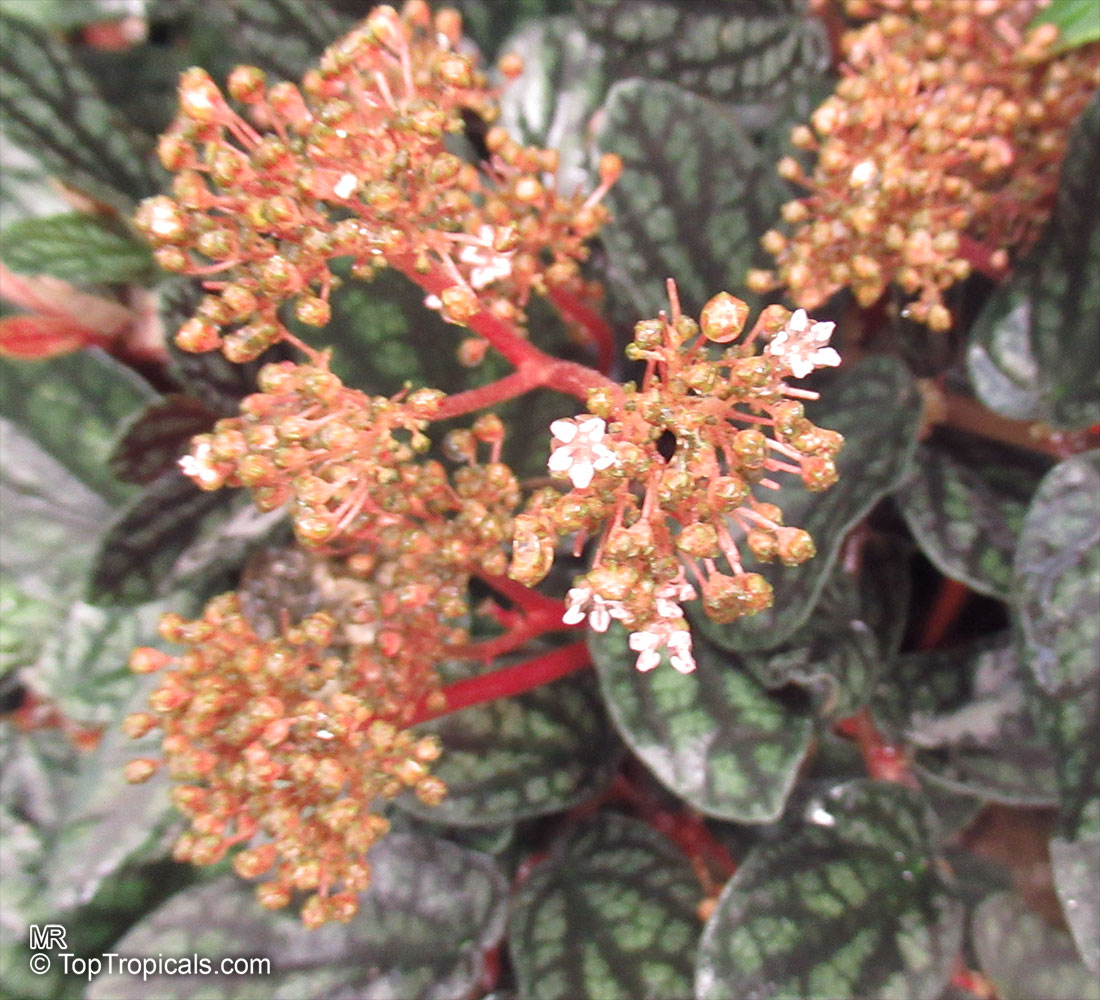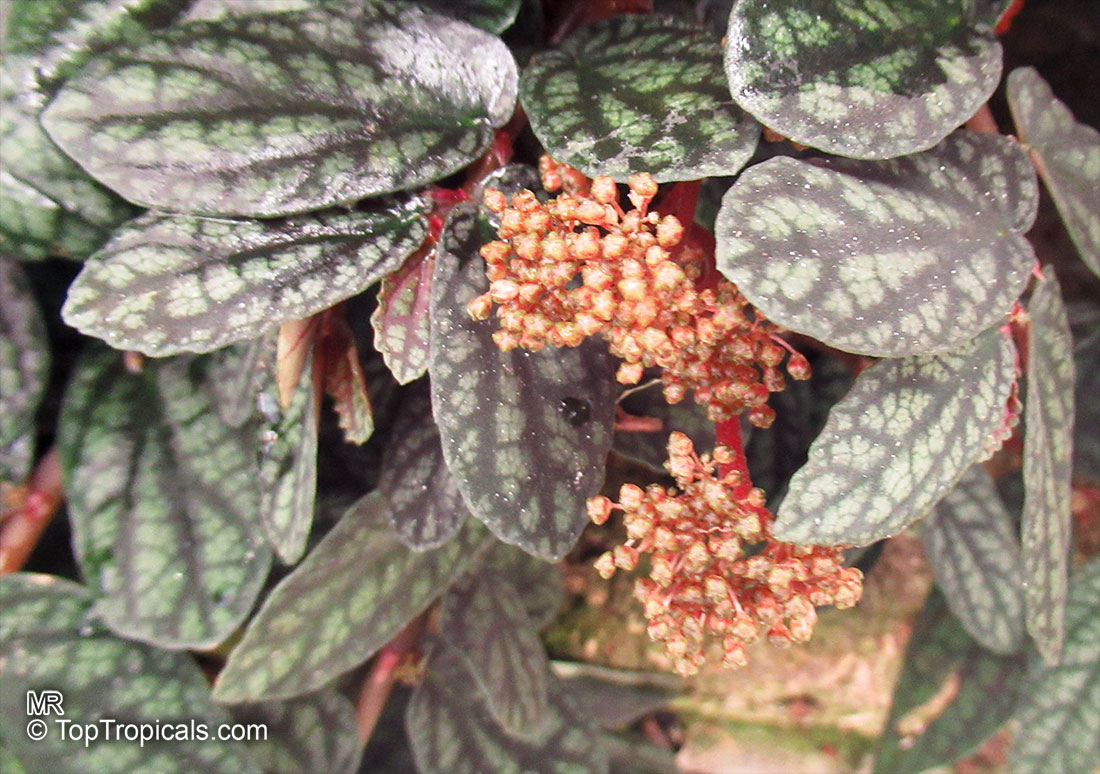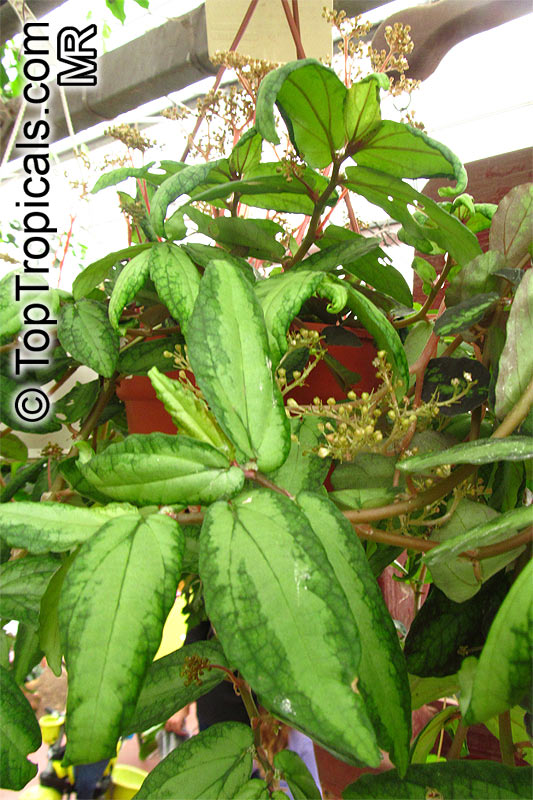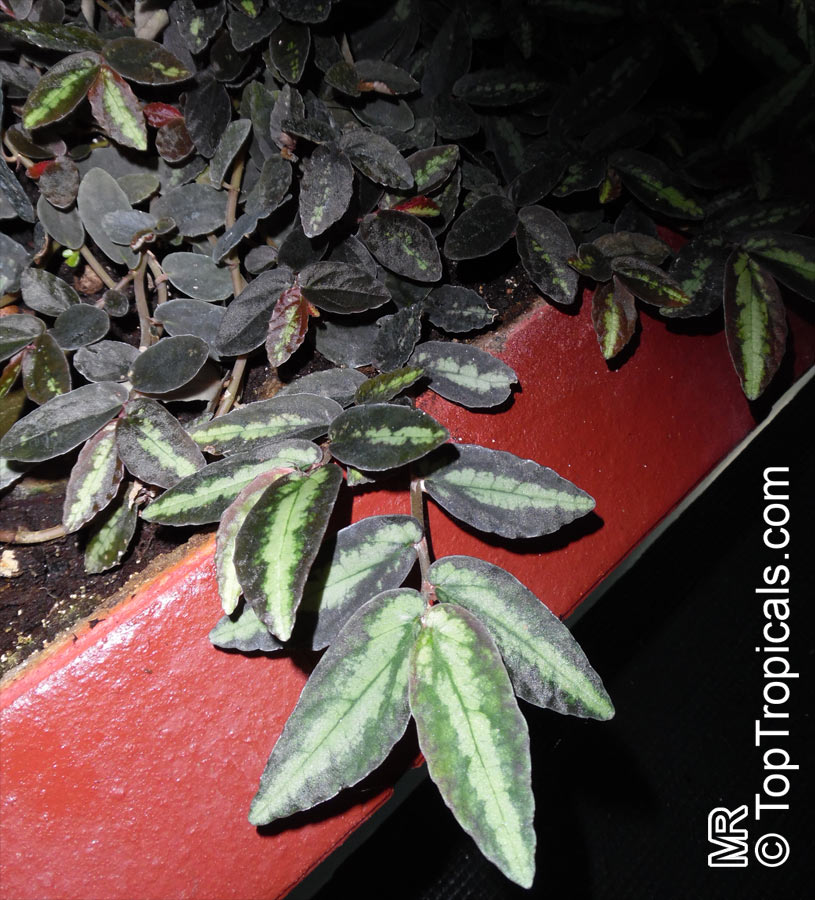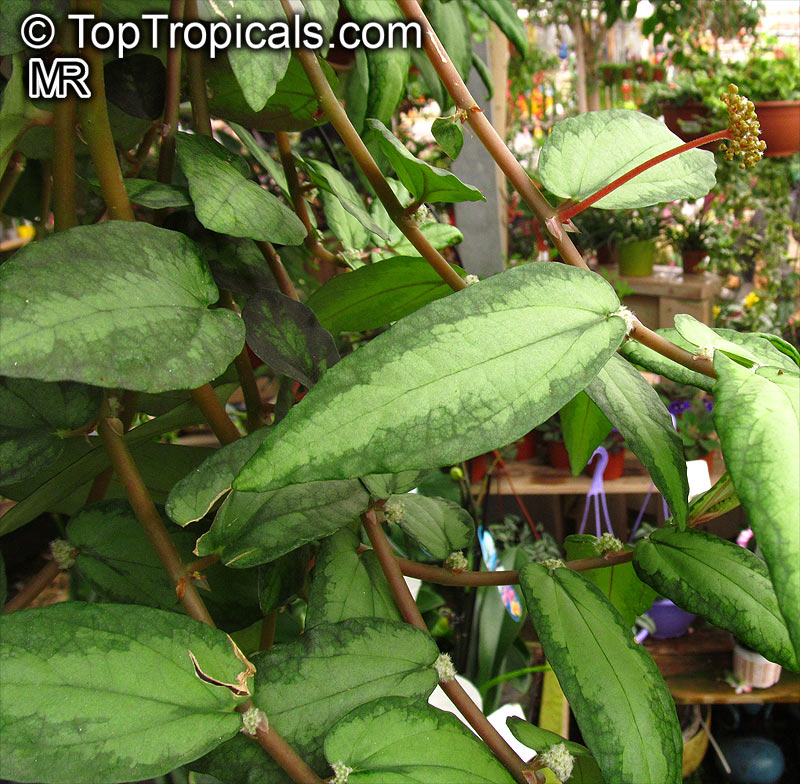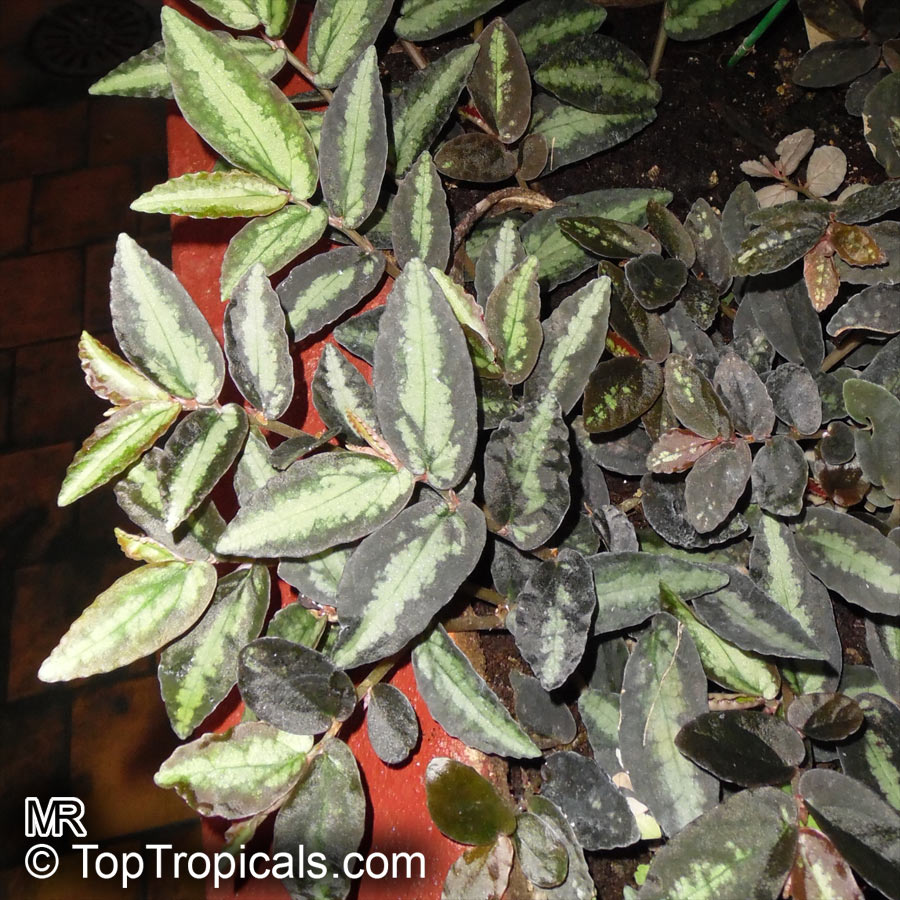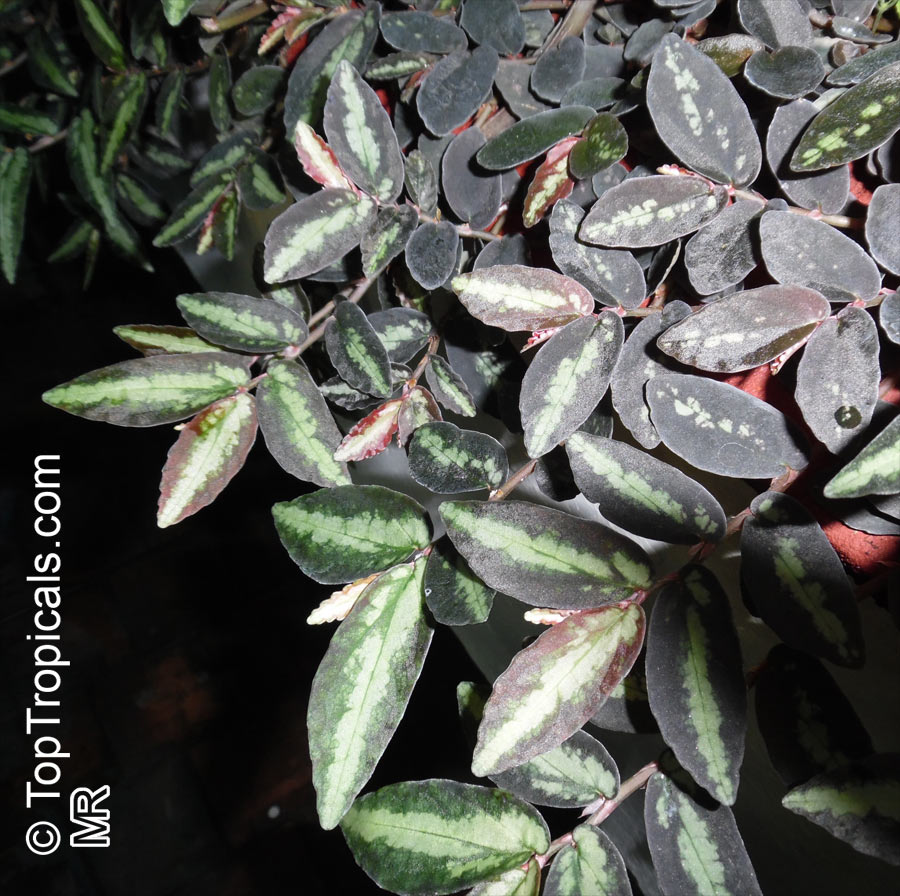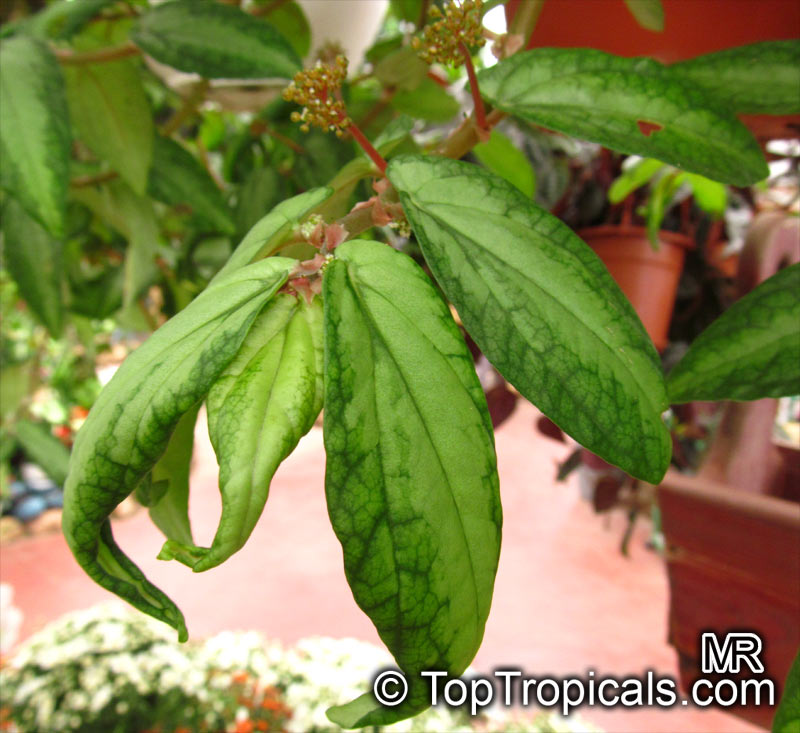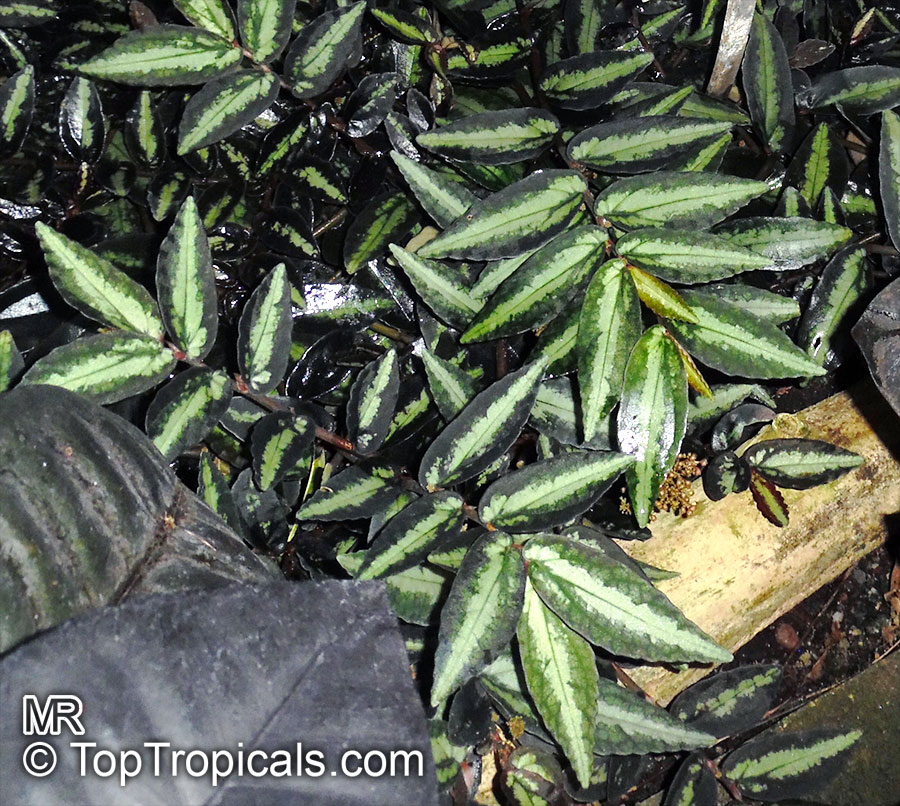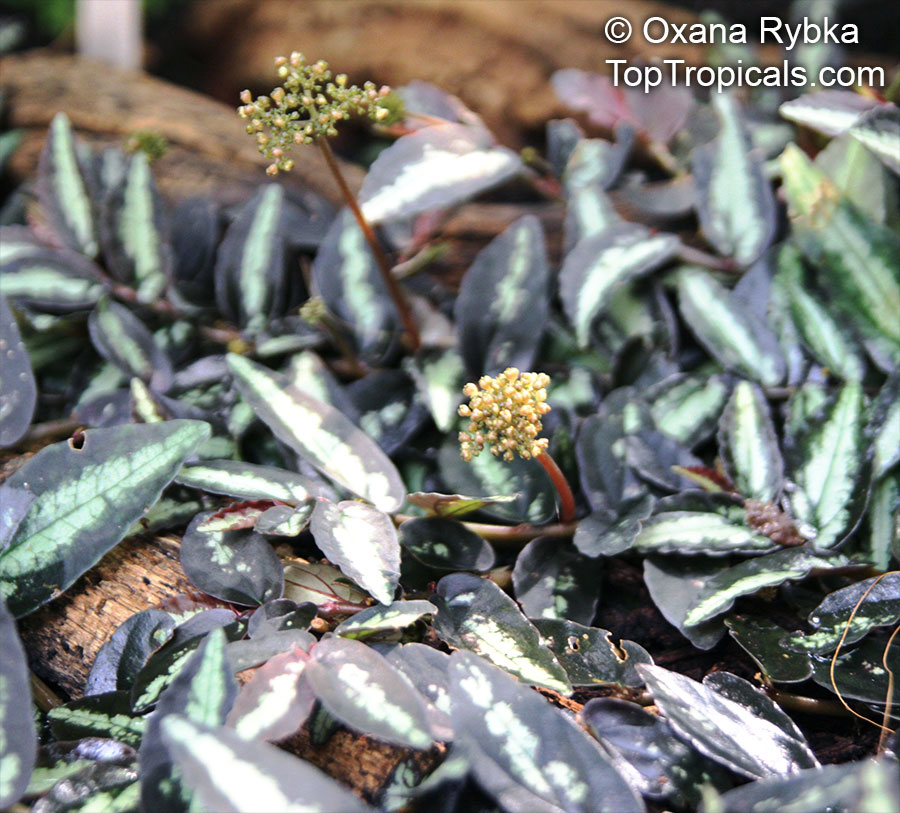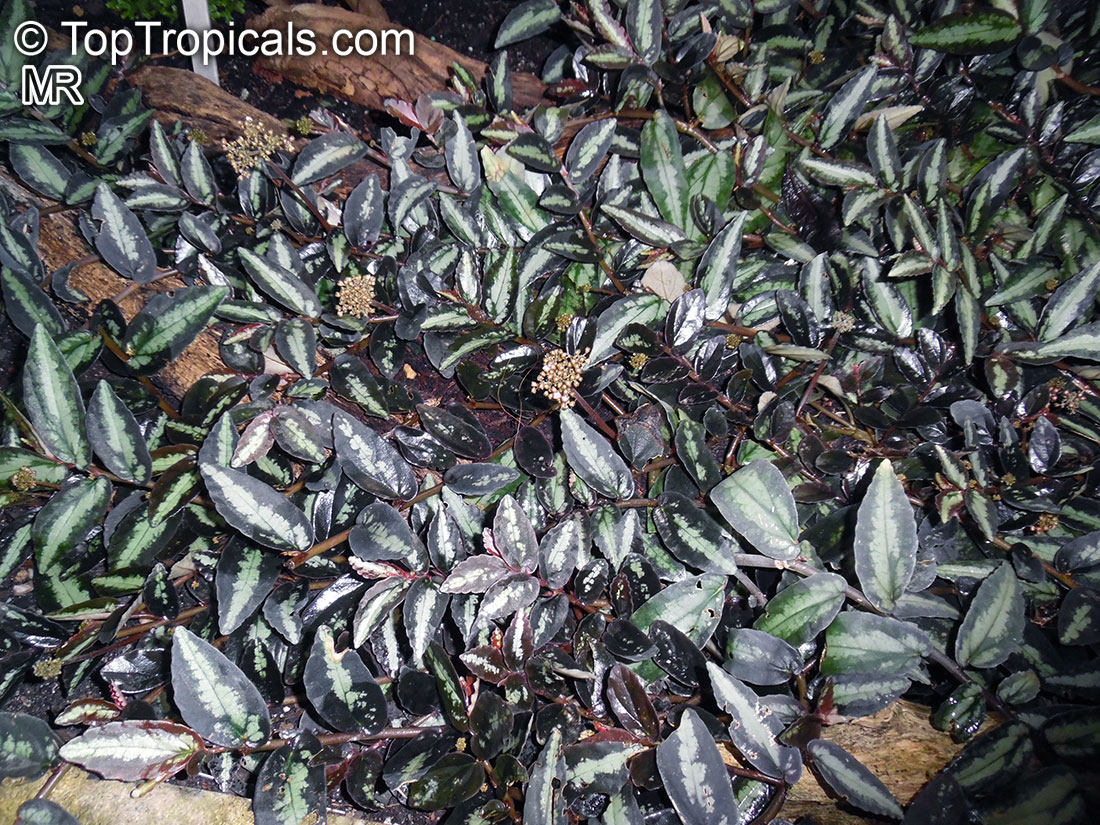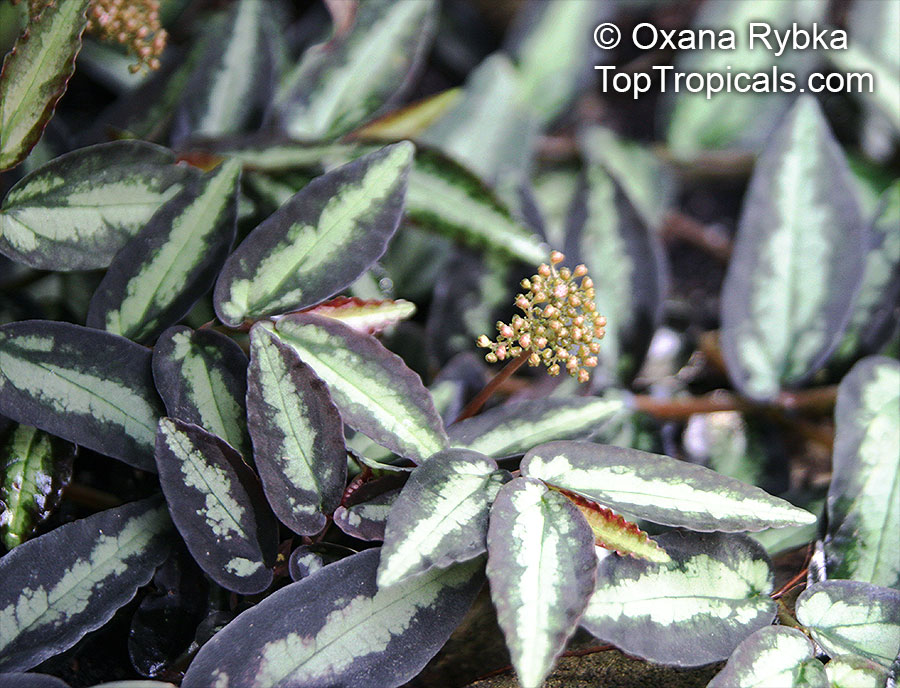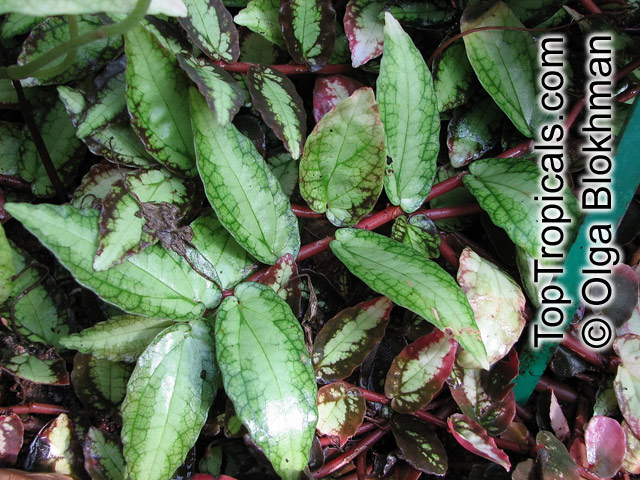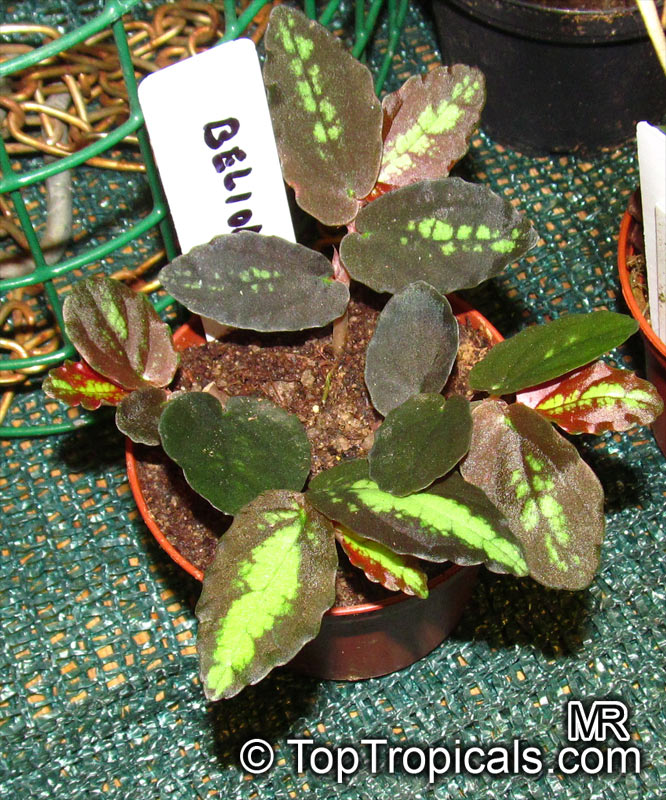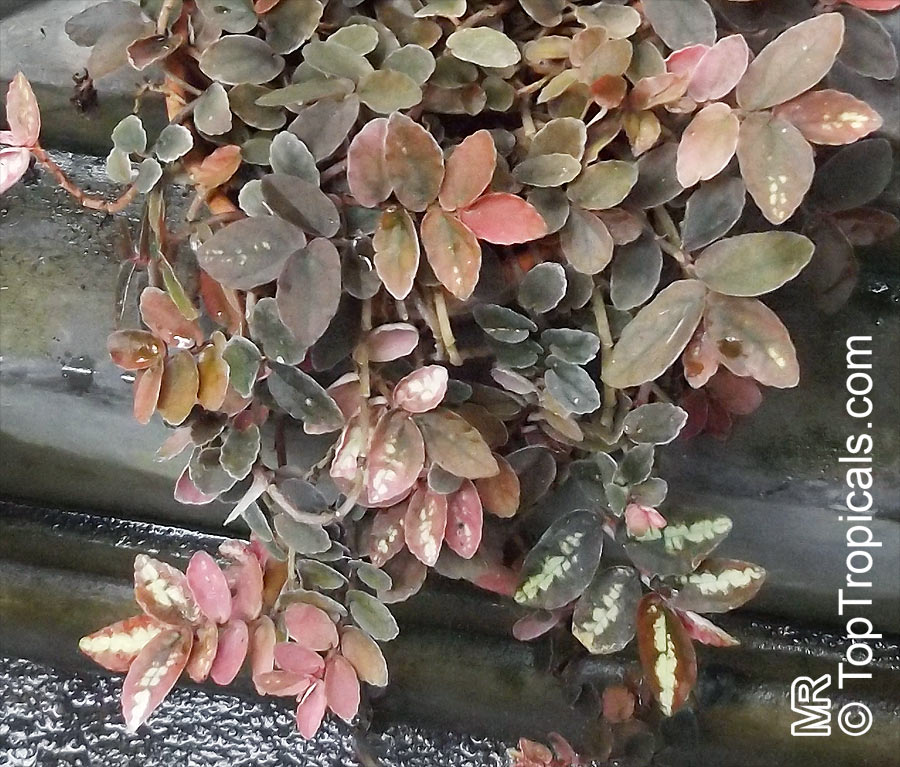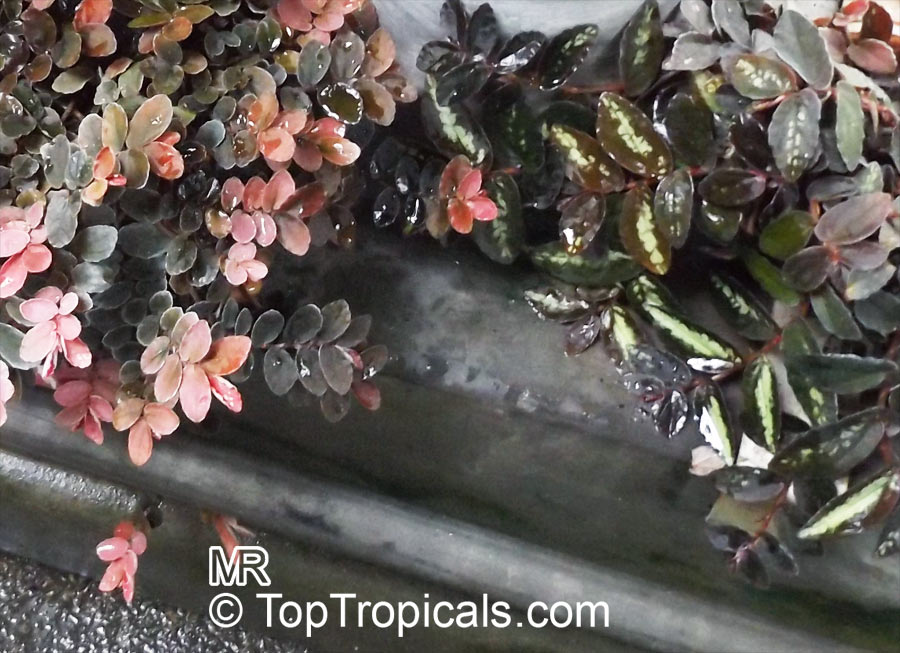Urticaceae - Botanical Family
Top Tropicals Plant Encyclopedia
| Number of plants found: 22 | Next | 
|
Go to page: | 1 | 2 | 3 |
Botanical names: Boehmeria nivea, Boehmeria tenacissima
Common names: Chinese grass, Chinese Silk Plant, Ramie
Family: Urticaceae
Origin: East Asia







Boehmeria nivea, a Chinese grass native to East Asia, is a large shrub commonly grown for its fiber uses and for its rarity as an ornamental. It can grow up to 5-10 ft tall, and prefers a full sun to semi-shade location and regular to moderate watering. The plant is a popular ethnomedical plant, with the root peeled and boiled and the leaves used to make cakes. It is thought to have cooling, demulcent, diuretic, resolvent and uterosedative properties due to the flavonoid rutin it contains.
Boehmeria nivea is grown in USDA Zones 7-11, and mature plants are cold hardy at least down to temperatures in the 30s F (degrees Fahrenheit) with short-term exposure. When grown in a pot, it should be given protection from colder temperatures, such as a move to an indoor location during the winter months. For best growth, the plant should be given plenty of sun and kept evenly moist. Fertilize monthly with a balanced fertilizer, and water regularly to keep the soil moist but not waterlogged. Pinching back the stem tips can encourage more bushy growth for the ornamental gardener.
Botanical name: Myriocarpa longipes
Common name: Chichicaste
Family: Urticaceae
Origin: Central and South America




Myriocarpa longipes, commonly known as Chichicaste is a small tree native to Central and South America. The tree grows to a height of between 10 and 20 feet and has an oval crown and arching branches. Its leaves are around 3 inches long, dark green and leathery with greyish undersides. The young leaves are red in color, they turn dark green only after reaching maturity.
Chichicaste can grow in full sun to semi-shade, and requires regular watering during the warmer months. The tree is hardy in USDA zones 9-11. It requires well-drained soil, and is frost-sensitive.
When growing in a pot in colder regions, ensure that a container with a sufficient drainage hole is used, as well as a potting mix with plenty organic matter. The tree should be moved to a sheltered position or indoors during the winter months. During the summer, ensure that the tree receives enough water, but be careful not to overwater. Apply liquid or fertilizer once every two to three months to provide the tree with adequate nutrients and encourage growth. Prune regularly to keep the tree compact and manageable.
Botanical name: Myriocarpa stipitata
Family: Urticaceae
Origin: South America





It is native to South America, from Peru and Bolivia to Argentina. Myriocarpa stipitata is an evergreen shrub or small tree that makes an attractive addition to a landscape. It grows to an average height of 5-10 ft when grown as a shrub, and 10-20 ft when grown as a small tree. With its long, thin leaves, this plant has a very graceful, elegant appearance.
The plant appreciates a warm, sunny spot with plenty of sun for most of the day, however, it can tolerate some shade, such as in an area that receives morning sunlight but some shade in the afternoon. It requires regular watering, especially during hot, dry periods.
Myriocarpa stipitata is winter-hardy in USDA zones 9 to 11, and is especially suited to container growing. It needs a pot that is deep enough to accommodate its long roots. In cold regions, the container should be brought indoors in fall before the first frost and should be kept in a cool room with indirect sunlight. Regular watering should be maintained, with the soil being allowed to dry out partially in between each watering.
Overall, Myriocarpa stipitata is a great choice for warm climates and those who want to add an eye-catching and graceful element to their garden.
Botanical names: Obetia ficifolia, Urtica ficifolia
Common name: Bois d'ortie
Family: Urticaceae
Origin: Réunion and Rodrigues islands






Botanical names: Pellionia acaulis, Elatostema latifolium var. acaule
Common name: Pellionia
Family: Urticaceae
Origin: China





Botanical names: Pellionia pulchra, Procris repens
Common names: Satin Pellionia, Rainbow Vine
Family: Urticaceae
Origin: Southeastern Asia





Grown for the beauty of its leaves, it makes an ideal basket or terrarium plant.
Botanical name: Pellionia repens
Common name: Watermelon Pellionia
Family: Urticaceae
Origin: Southeast Asia





Grown for the beauty of its leaves, it makes an ideal basket or terrarium plant.
| Next |  |
Use link to repeat this search:
https://toptropicals.com/cgi-bin/garden_catalog/cat.cgi?search_op=and&keyword_op=and&language=e&family=Urticaceae&number=10
&no_change_lang=1&user=tt&sale=1&first=0
